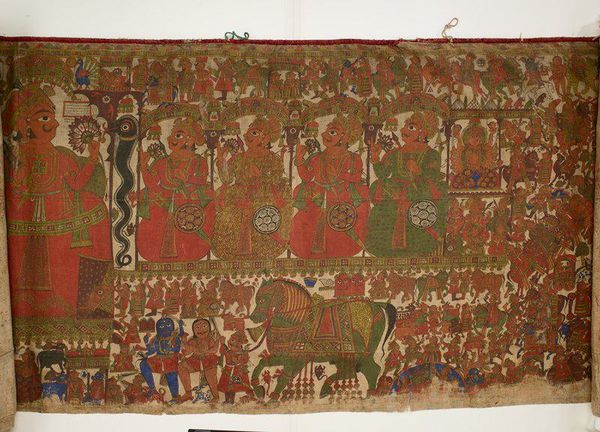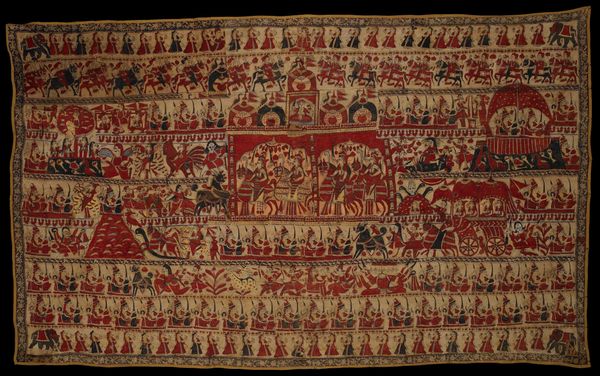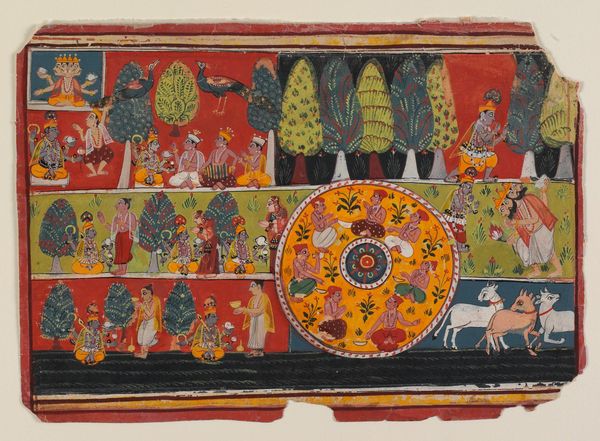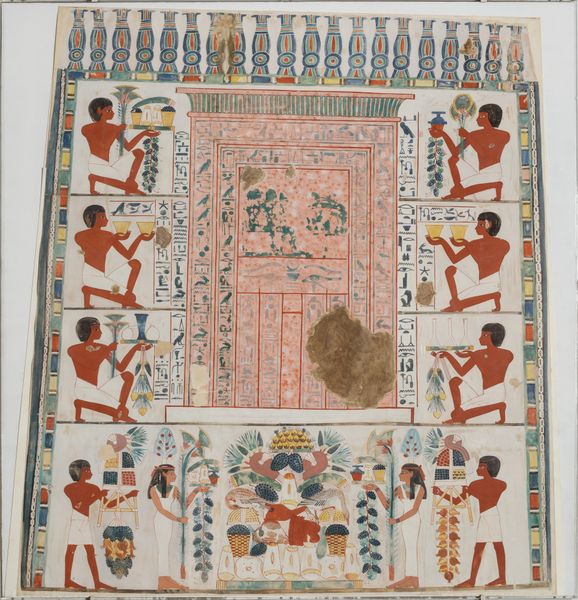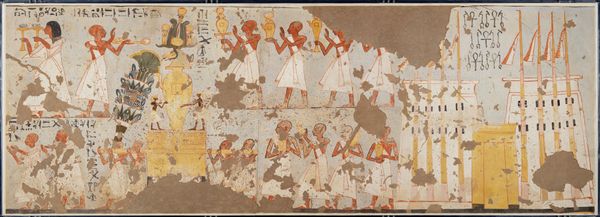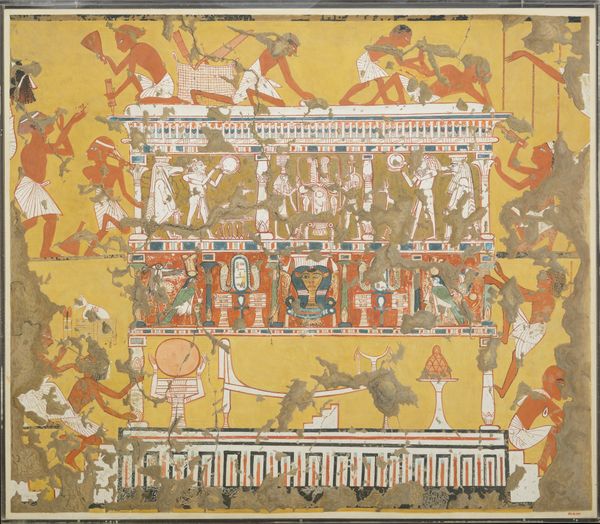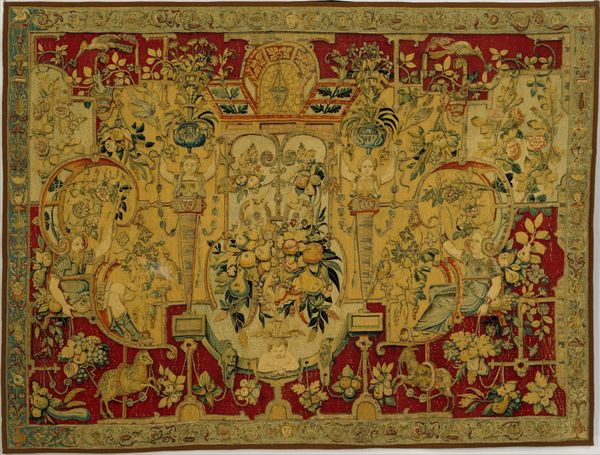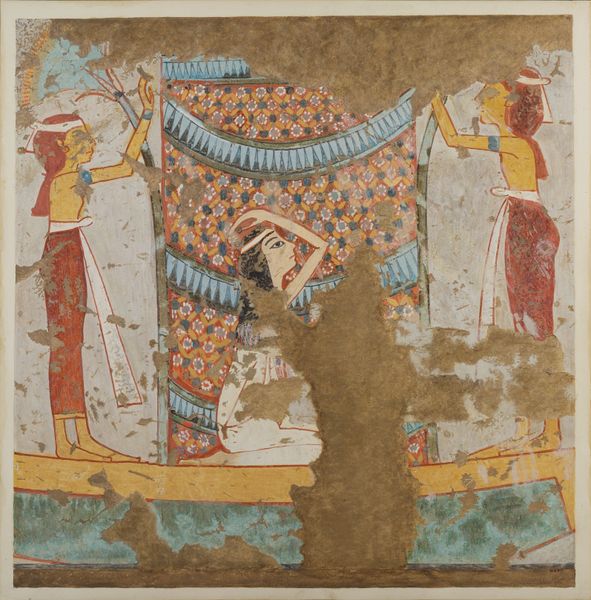
tempera, painting, textile, pencil
#
narrative-art
#
tempera
#
painting
#
textile
#
folk-art
#
pencil
#
miniature
#
watercolor
Dimensions: 62 × 193 3/4 in. (157.48 × 492.13 cm)
Copyright: Public Domain
Motilal Josi painted this scroll, dedicated to Pabuji, with opaque watercolor on cloth. Pabuji, a folk deity of Rajasthan, is seen here in a heroic posture, holding a lance and a lotus, symbols of power and purity. The lotus, often associated with divine birth and spiritual awakening, finds echoes in ancient Egyptian art, where it symbolized rebirth. In a Christian context, consider how the Madonna is often depicted with lilies, similarly denoting purity. This symbol, laden with such history, connects us to humanity's collective quest for transcendence. Such a visual motif is not static. Its endurance speaks to a collective, subconscious yearning for renewal. Over time, the lotus has been subtly altered to reflect societal values, embodying both a sacred meaning, and evolving cultural narratives. This scroll, with its vibrant depiction of Pabuji, serves as a testament to the enduring nature of symbols and their ability to resonate across time and cultures.
Comments
minneapolisinstituteofart almost 2 years ago
⋮
This painted scroll depicts the life of Pabuji, a deified folk hero who emerged in 14th century Rajasthan, India. The larger figurative representations feature Pabuji in profile, framed by multiple windows, while many of the complex scenes depict Pabuji as the victor of battles. A storyteller priest would have unrolled the scroll in the presence of a small audience and narrated Pabuji’s life through prose and song, while pointing to the images as his guide. Because the hero of the story is also revered as a regional god, the performance would have been imbued with ritual significance. Other painted scrolls tell non-religious stories and were used purely for entertainment purposes, especially before the introduction of cinema. Since the time of this work's original creation, the number of traveling storytellers in India has decreased dramatically.
Join the conversation
Join millions of artists and users on Artera today and experience the ultimate creative platform.
